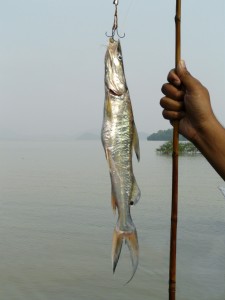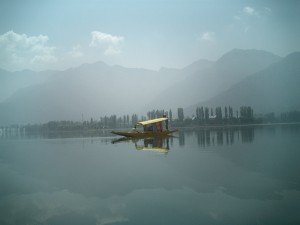By Giedre Steikunaite

A photograph?s story is not only the one told in the image. Who took a picture, and why, also matters. Now who takes pictures of the developing world, and why?
?The vast majority of the published images that we see of the developing world are taken by predominantly white, predominantly male photographers from the ?north? or the ?west? (whichever language you use) and we think a) that this is unfair and b) that it leads to a distorted view lacking balance. The distorted view is intrinsically dangerous as it perpetuates stereotypes,? said Dr Colin Hastings, responsible for strategy and financing at?Majority World, in an interview with?igenius.
How about giving Majority World photographers a chance to represent the world they live in themselves?
Majority World, a global initiative set up to provide a platform for indigenous photographers from the Majority World to gain fair access to global image markets, is in its third year. Their?online library contains loads of photographs, both individual and featured, ranging from Adolphus Opara?s?Slum Aspirations to Aaron Sosa?s?Daily Havana to Saikat Ranjan Bhadra?s?Grey Reality. The idea is to shift the current practice of the global North photographing the global South and allowing the South to do it itself.
Photographers in the developing countries face numerous challenges. At first it was said that they don?t exist, then that they ?don?t have the eye?. But apart from these prejudices, there are serious problems photographers have to deal with: lack of access to the internet, costly cameras, scanners, and computers, lack of awareness of Northern markets, no money to travel and build up a portfolio, poor business and marketing skills and, probably worst of all, untrusting potential clients, who are nervous to assign an unknown photographer in a distant land.

Let?s come back to those white males who dominate the global photography market with their orthodox reflections of the Majority World. And aid. ?Development isn?t simply about money. What about developing mutual respect; enabling equitable partnerships; providing enabling environments for intellectual exchange? What about creating awareness of the underlying causes of poverty? These are all integral parts of the development process. When all things are added up, cheap images providing clich?d messages do more harm than good. They do not address the crucial issue: poverty is almost always a product of exploitation, at local, regional and international levels. If poverty is simply addressed in terms of what people lack in monetary terms, then the more important issues of exploitation are sidelined,? wrote Shahidul Alam, an international photojournalist and Chairman of?Majority World in?The New Internationalist in 2007.
Back then, the situation started to change, if only very slowly. In that same article, Mr Alam agreed that due to the media?s deteriorating financial situation, some adjustments had taken place: with media?s budgets squeezed, it?s getting harder to fly Western photographers to make some shots in a far away land.
This is where local photographers come in handy, but the fact is yet to be recognized by news outlets. And it ain?t so sunny out there, either. ?Certain rules still apply of course, such as the vast differentials in pay between local and Western photographers,? wrote Mr Alam.
I asked Dr Colin Hastings who works tirelessly to promote Majority World photography, how to encourage global media organizations to use images made by local photographers. He said we need to make a distinction between purchasing images pre-taken and uploaded into an existing photo library (known as ?stock photography?) and ?assignments?, where a photographer is commissioned to take specified types of image for a particular purpose.
?As for stock images, all we ask is that Majority World photographers have equal opportunities to get their images into photo libraries and showcased across the world and available for sale. At present they are marginalized and face many disadvantages. It is providing an equal playing field that is at the heart of what Majority World is about, enabling them to have the resources that Western photographers just take for granted.
?When it comes to assignments, Western media, editors and photographers tend to go out with a predetermined agenda often to find images to confirm their existing preconceptions and stereotypes often based on information that is way out of date. This is an issue of editorial bias, i.e. do you really want to find out the truth (whatever that is).
?Well, you are more likely to find out from someone who is of the culture, speaks the language, understand the nuances and the history, than from someone who jets in for a few days, is essentially a voyeur from the outside of the culture, and may be viewed with a mixture of incredulity and suspicion by those being photographed… To say nothing of the ethical issues about whether anyone ?should? be or has the right to take photos in any situation.
?It is right to acknowledge that it is not a simple matter to employ and brief an unknown photographer at a distance, especially where there are language and other cultural barriers to communication. But that can also be too easily used as an excuse. There are suitable and reliable photographers out there who do fine work. Part of our role is to take the risk out of this process by finding the most suitable photographer and acting as a communications facilitator.
?We have to help the client to change their behavior and ways of doing things and also help the photographer to understand and to respond to the clients? needs.? It?s complex!?
Three years ago, Dr Hastings expressed his wish for every postcard sold in a tourist destination in the global South to be taken by a local photographer. ?My vision is to see a whole range of beautiful high quality photographic products – cards, calendars, diaries or digital products images – taken entirely by Majority World photographers,? he said.
We?re not there yet, but hopefully on the way.
Photos: fish by?Partha Sarathi Sahana, water by?prakhar





Leave a Reply
You must be logged in to post a comment.